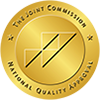Did you know that over 21 million Americans suffer from substance use disorders? Behind the staggering figure lies a sobering fact: drugs don’t just alter the way we feel for a short time—they change the way our brains and bodies function.
When a substance is ingested, such as legal substances, like OxyContin and Ambien, or illegal substances, like heroin and methamphetamine, chemical reactions occur within the nervous system instantaneously. The high is what the reactions produce, yet they are also the beginning of potential damage that can escalate with repeated intoxication.
The fine-tuning of the brain’s neurotransmitters, the chemicals that control everything from mood to memory, gets jacked up. At the same time, vital organs throughout the body absorb the toxic effects, too often leaving behind long-term health problems after drug use is stopped.
At 12 South Recovery, we see the following consequences up close through our patients checking into treatment for alcohol, opioid, stimulant, and other addictions. Understanding what drugs do within your body and brain provides the necessary insight regarding why you became addicted and how accessing professional aid constitutes the finest manner in which you can overcome your addiction.

How Drugs Affect the Brain
The Brain’s Reward System: Hijacked by Substances
Your brain contains a reward system designed to encourage behaviors necessary for survival by releasing dopamine, a neurotransmitter associated with pleasure and satisfaction. Natural activities like eating, socializing, and sex activate this system moderately.
Drugs, however, flood this system with dopamine at levels far beyond what natural experiences produce:
- Alcohol increases dopamine by inhibiting neurons that generally suppress the reward system
- Opioids like heroin and fentanyl trigger dopamine release by mimicking natural endorphins
- Stimulants such as cocaine and methamphetamine block the removal of dopamine, causing it to build up to unnaturally high levels
This overwhelming surge creates the intense pleasure or high that drives continued use. With repeated exposure, the brain adapts by:
- Producing less dopamine naturally
- Reducing dopamine receptors to compensate for overstimulation
- Becoming less sensitive to dopamine overall
These adaptations explain why regular users need increasing amounts of a drug to feel the same effects (tolerance) and why they feel terrible without it (withdrawal). More troublingly, these changes can persist for months or even years after stopping drug use, contributing to the difficulty of maintaining long-term recovery.
Structural and Functional Brain Changes
Beyond chemical adaptations, drugs cause physical changes to the brain’s structure and function. Brain imaging studies reveal concerning alterations in people with substance use disorders:
Prefrontal Cortex Damage: This region, responsible for decision-making, impulse control, and judgment, shows reduced activity in long-term drug users. These changes help explain why someone might continue using drugs despite clear negative consequences.
Memory System Alterations: Drugs impact the hippocampus, creating strong memories associated with drug use that trigger intense cravings when reencountered. These powerful associations can last indefinitely, explaining why environmental cues can trigger relapse years after someone has stopped using.
Stress System Dysregulation: Chronic drug use disrupts the brain’s stress systems, leading to heightened anxiety, irritability, and stress sensitivity during withdrawal. This dysregulation persists during early recovery, making stress a major relapse trigger.
Brain Volume Reduction: Long-term use of certain substances, particularly alcohol, methamphetamine, and inhalants, causes measurable shrinkage in brain volume. While some recovery occurs with abstinence, certain changes appear permanent.
At 12 South Recovery, our treatment programs incorporate evidence-based approaches like cognitive behavioral therapy (CBT) targeting these brain changes. By understanding how substances have affected a patient’s brain function, we can implement more targeted and effective treatment strategies.
Substance-Specific Brain Effects
Different substances affect the brain in unique ways:
Alcohol acts as a central nervous system depressant, enhancing inhibitory neurotransmitters while blocking excitatory ones. With chronic use, it causes significant brain shrinkage, particularly in regions controlling coordination, memory, and emotional regulation. The brain’s attempt to compensate for constant suppression can lead to dangerous rebound excitation during withdrawal, potentially causing seizures.
Opioids like heroin, fentanyl, and prescription painkillers bind to specific receptors throughout the brain, mimicking natural pain-relieving chemicals. Extended use reduces the brain’s production of natural endorphins and creates structural changes in regions controlling pain perception, leading to heightened sensitivity to pain during recovery—a phenomenon called hyperalgesia.
Stimulants such as cocaine, methamphetamine, and prescription ADHD medications increase activity in the central nervous system. With ongoing use, they can damage dopamine-producing neurons, potentially leading to symptoms similar to Parkinson’s disease. Methamphetamine particularly impacts brain regions involving memory and emotion, explaining the cognitive difficulties many recovering users experience.
Marijuana affects cannabinoid receptors concentrated in brain regions responsible for memory, thinking, concentration, and coordination. Heavy use during adolescence, when the brain is still developing, appears particularly problematic, potentially lowering IQ and increasing vulnerability to mental health conditions.
Benzodiazepines enhance the effects of GABA, the brain’s primary inhibitory neurotransmitter. Long-term use leads to compensatory changes that can persist for months after discontinuation, explaining the protracted withdrawal syndrome many experience.
How Drugs Affect the Body
Cardiovascular System Impacts
The heart and blood vessels bear significant damage from substance use. Stimulants like cocaine and methamphetamine cause immediate increases in blood pressure, heart rate, and blood vessel constriction, which can trigger heart attacks even in young, otherwise healthy individuals. Chronic stimulant use is associated with heart muscle damage, premature coronary artery disease, and increased stroke risk.
Opioids affect heart rhythm and can cause dangerous slowing of respiration, while alcohol contributes to high blood pressure, irregular heartbeat, and weakened heart muscle (cardiomyopathy). Even marijuana increases heart rate for several hours after use, potentially raising the risk of heart attack during this window.
Intravenous drug use brings additional risks, including endocarditis—a life-threatening infection of the heart valves that often requires surgery and lengthy antibiotic treatment.
Respiratory System Damage
The lungs and respiratory system suffer direct harm from many substances. Smoking or vaping drugs introduces irritants and toxins into delicate lung tissue. Marijuana smoke contains many of the same carcinogens as tobacco, while crack cocaine can cause “crack lung”—severe inflammation and respiratory failure.
Opioids pose a unique danger by suppressing the brain’s respiratory center, causing breathing to slow or even stop completely. This respiratory depression explains why opioid overdoses are so deadly and why medications like naloxone that reverse this effect save lives.
Methamphetamine use is associated with pulmonary hypertension and increased susceptibility to lung infections, while inhalants directly damage lung tissue through chemical irritation.
Liver and Kidney Function
As the body’s primary detoxification organs, the liver and kidneys face enormous strain from processing drugs and alcohol:
Liver Effects: Alcohol causes a spectrum of liver diseases, from fatty liver to hepatitis to cirrhosis. Acetaminophen, often combined with opioid painkillers, becomes highly toxic to the liver when mixed with alcohol. Stimulants stress the liver through increased metabolic demands and temperature elevation, while intravenous drug use raises the risk of hepatitis B and C.
Kidney Damage: Many drugs cause direct kidney injury. Heroin use is associated with several types of kidney disease, while long-term use of certain prescription medications can lead to chronic kidney disease. Cocaine and methamphetamine can cause acute kidney failure through multiple mechanisms, including decreased blood flow, muscle breakdown, and direct toxicity.
The impact on these vital filtering organs explains why many people with substance use disorders develop chronic medical conditions requiring lifelong management even after achieving recovery.
Gastrointestinal and Nutritional Effects
Drug and alcohol use profoundly disturbs the digestive system. Alcohol damages the stomach lining, leading to gastritis and ulcers, while interfering with nutrient absorption in the intestines. Opioids severely slow gastrointestinal motility, causing chronic constipation that can lead to bowel obstruction.
Stimulants typically reduce appetite and can lead to significant weight loss and malnutrition. The lifestyle associated with severe addiction often involves irregular eating patterns and poor food choices, further compromising nutritional status.
These digestive and nutritional problems contribute to the physical deterioration seen in advanced addiction and must be addressed during treatment. At 12 South Recovery, our programs include nutritional assessment and support as essential components of physical healing.
Immune System Suppression
Perhaps most concerning in today’s health environment is the impact of substances on immune function. Virtually all drugs of abuse—including alcohol, opioids, cocaine, and methamphetamine—suppress immune response, making users more vulnerable to infections and reducing their ability to recover when illness occurs.
This immune suppression explains why people with substance use disorders experience higher rates of infectious diseases like pneumonia, tuberculosis, and sexually transmitted infections. For those who inject drugs, the risk extends to skin and soft tissue infections, endocarditis, and blood-borne viruses like HIV and hepatitis.
Neurological and Cognitive Effects
Beyond the brain’s reward system, drugs damage the nervous system in ways that affect cognitive function and coordination:
Memory and Attention: Most substances impair short-term memory and attention. With long-term use, these deficits can persist for months or years after cessation.
Motor Coordination: Alcohol and benzodiazepines impair the cerebellum, affecting balance and fine motor control. Methamphetamine can cause tremors and movement disorders similar to Parkinson’s disease.
Cognitive Processing Speed: Many drugs slow mental processing, with effects that can persist well into recovery. This “brain fog” represents a significant challenge for many people in early sobriety.
Risk of Seizures: Several substances, particularly alcohol and benzodiazepines, significantly increase seizure risk, especially during withdrawal.
At 12 South Recovery, our cognitive rehabilitation approaches help patients address these neurological effects while building coping strategies that support long-term recovery.
Recovery and Healing: The Brain and Body’s Resilience
Despite the sobering information above, there’s encouraging news: the brain and body demonstrate remarkable healing capacity once drug use stops. This neuroplasticity—the brain’s ability to reorganize and form new connections—forms the biological basis for recovery.
Timeline of Physical Recovery
Physical recovery begins immediately after detoxification but follows different timelines depending on the substance and duration of use:
First Weeks: The body begins eliminating toxins, and withdrawal symptoms gradually subside. Sleep patterns, appetite, and energy levels start to normalize.
First Months: Cardiovascular function improves, with decreasing blood pressure and heart rate in former stimulant users. The immune system begins to strengthen, reducing infection susceptibility.
Six Months to One Year: Brain scans show increasing metabolic activity in previously suppressed regions. Many cognitive functions show significant improvement, though processing speed may still lag.
One Year and Beyond: With continued abstinence, liver function tests often return to normal ranges unless cirrhosis has developed. The risk of many drug-related health complications decreases substantially.
This healing process explains why many patients report feeling physically “reborn” after extended sobriety, with improvements in energy, sleep quality, and overall health that they hadn’t experienced in years.
Supporting Recovery with Professional Treatment
While natural healing occurs with abstinence, professional treatment significantly accelerates and enhances this process. At 12 South Recovery, our multi-faceted approach includes:
Medical Detoxification: Supervised withdrawal management that minimizes discomfort and risks while preparing the body for healing
Nutritional Support: Targeted nutrition plans that address specific deficiencies and support organ repair
Physical Activity: Exercise programs that promote neuroplasticity, reduce stress, and accelerate physical recovery
Therapeutic Interventions: Evidence-based approaches like Cognitive Behavioral Therapy (CBT) and Eye Movement Desensitization and Reprocessing (EMDR) that help rewire damaging thought patterns and process trauma
Holistic Treatments: Complementary approaches that support whole-person healing, including stress management techniques that reduce the harmful stress response
Medication-Assisted Treatment: When appropriate, medications that stabilize brain chemistry and reduce cravings while the brain heals
By combining these approaches in individualized treatment plans, we maximize the body’s natural healing processes while providing the psychological tools necessary for sustainable recovery.
Call 12 South Recovery Today
Understanding how drugs affect your brain and body provides powerful motivation for seeking treatment and maintaining recovery. The damage caused by substances helps explain why addiction isn’t simply a matter of willpower—it reflects real physiological changes that require proper treatment to address.
The good news is that with appropriate support and intervention, significant healing is possible. At 12 South Recovery, we’ve witnessed countless patients transform their health and reclaim their lives through our residential and outpatient programs. Our approach combines medical expertise with evidence-based therapies to address both the physical and psychological aspects of addiction.
If you or someone you love is struggling with substance use, know that effective help is available. Our team at 12 South Recovery offers personalized treatment plans that support healing at every level—from detoxification through continuing care and our alumni program.
Don’t let another day of damage accumulate. Contact us today to learn more about our programs and how we can help you begin your healing process. And if you found this information valuable, please share it with others who might benefit from understanding the effects of drugs on the brain and body.






































